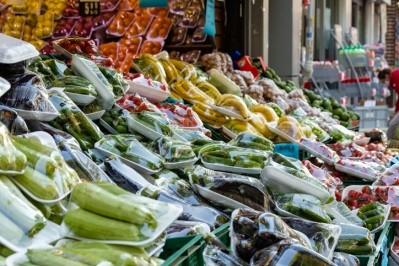Sweden, Finland and Austria among the world’s most sustainable food systems… what are they doing right?

Produced by Economist Impact with the support of the Barilla Foundation, the Food Sustainability Index assesses the food-system sustainability of 78 countries according to three pillars: food loss and waste, sustainable agriculture, and nutritional challenges. The 2021 edition, the index’s fourth iteration since 2016, shows that Sweden, Japan, Canada, Finland and Austria have the most sustainable food systems in the world.
These countries excelled in managing food loss and waste and nutritional challenges, the authors of the report said.
Martin Koehring, Senior Manager at Economist Impact, identified the strong food waste policy responses in particular that are working.
In terms of addressing food waste at the retail and food services levels, Good Samaritan Laws create policy environments that encourage food donation because they remove any legal liability associated with food waste, he explained. “France is a great example here and even takes this a step further by preventing supermarkets from throwing away unsold food and obliging them to donate it. They do this by ensuring that all retailers establish an agreement with one or more organisations within their area and impose fines on those who do not. They also mandate that food companies reduce food waste by 50% compared with 2015 levels by 2025.”
At the household level, legislation that allows food companies to remove ‘best before dates’ and only keep the ‘use by’ date can help reduce the amount of food thrown away, added Koehring.
Though food waste is predominantly an in-home problem, Koehring endorsed various responses available to food companies to address the problem. The FAO, for instance, estimates that food loss and waste costs the global economy at least US$2.6tn a year—so reducing the volume of food being wasted has financial benefits. Consumers are also becoming increasingly aware of these issues, so ensuring more sustainable food supply chains has reputational benefits, too.
A key first step is to properly measure the volume of food waste associated with their supply chains, he explained. “This gives companies a clear idea of the scale of the problem that they have to tackle and can enable them to set realistic yet ambitious targets and devise the right policies to act on the problem.”
Voluntary agreements are also a good way to take this a step further and collaborate with the various actors in the food chain to meet common targets. An example highlighted in the Food Sustainability Index’s research is the UK’s Courtauld Commitment 2030, which aims to achieve a 50% per head reduction in food waste by 2030 vs the UK 2007 baseline (covering manufacture, retail, hospitality and food service, and household). Signatories include retail companies, manufacturers, and the hospitality and food services industry, and they are all working with circular charity WRAP to track and measure their progress against the key targets of the commitment.
Inflation and commodity price fears
But the author warned about a climate of rising commodity prices and inflation which both impacts company margins the ability of their consumers to pay a premium for food products that are healthy and sustainable.
The affordability of sustainable diets received special attention in the latest Food Sustainability Index, revealed Koehring. “A sustainable diet is one that is generally healthy and has a low impact on the environment and food supply,” he said. “It is essential that these diets are affordable in order to advance equitable livelihoods across the value chain and ensure that food systems do not exclude anyone.”
“We included a dedicated indicator on the affordability of a healthy and sustainable diet in the nutritional challenges pillar of the Index. The FSI shows that a healthy and sustainable diet remains unaffordable in many lower-income countries, and also poses additional challenges for household purchasing power in middle- and higher-income countries in the current high-inflation period.”
The report also complained that around the world there continues to be major gaps in policy to build sustainable agricultural systems. Less than 50% of all countries in the index are mainstreaming climate change into their agricultural policies and only 36% are prioritising agriculture in their Nationally Determined Contributions (NDCs), it said. Countries performing best in this pillar include Finland, Estonia, Austria, Tanzania and Sweden. Even among the top 20 performers, policies are being implemented, but performance on key outputs falls short: almost 50% of the top 20 performers are among the worst performers for baseline water stress, and 70% sit in the bottom 20 for their use of synthetic fertilisers. “A key area of concern we identified with regards to Europe is that the EU’s climate action plan, or Nationally Determined Contribution (NDC), is still not sufficiently committing to specific agricultural mitigation and/or adaptation targets,” noted Koehring.
He applauded some existing best practices in integrating climate change into national agriculture policies in Europe. Finland, for instance, has a Climate Programme for Finnish Agriculture, ‘Steps towards Climate Friendly Food’, which aims to enhance the sustainability of the Finnish food system. Other examples of robust policy responses include the EU’s Biodiversity Strategy for 2030, new investment incentives in countries such as the UK (through The Path to Sustainable Farming: An Agricultural Transition Plan 2021 to 2024) and the involvement of European governments and corporations in the global LEAF (Lowering Emissions by Accelerating Forest finance) coalition.
Nutritional challenges
Finally, the top five performing countries for nutritional challenges were Japan, Sweden, Denmark, France and China. In terms of nutritional challenges, what can food businesses in Europe learn from somewhere like Japan? “The Japanese diet is known as a territorial diet, notably diets linked with specific geographical resources, cultures and ecology,” said Koehring. “Lessons can be learnt here in terms of encouraging the consumption of products and ingredients that can be grown and sourced locally based on the resources available, the prevalent food consumption habits, and the environmental boundaries set within a country. The traditional Japanese diet is rich in seafood and plant-based foods with limited amounts of animal protein or added sugars and fat. Therefore, Japan performs well among high-income countries in the diet composition indicators.”














